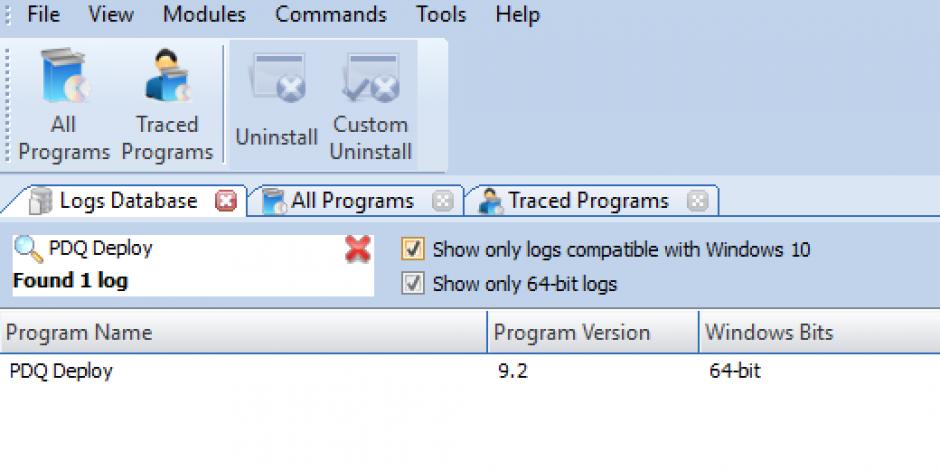
SolarWinds Database Performance Analyzer is performance monitoring and analysis tool for database admin. Supported Platforms: iOS, Android, Windows, Mac, and Linux.It provides customer support via Chat, Email, Contact Form, and Phone.Offers Customized reports, Application Discovery and Dependency Mapping, Business Service Management, Fault Management and Alerts, Application Analytics, and more.Supports popular databases like RDBMS, NoSQL, MS SQL, Hadoop, PostgreSQL, and more.Offers Cassandra DB, Couchbase, MongoDB, Redis, Memcached, and Oracle NoSQL NoSQL databases.Easily import data from CSV, Excel, and JSON.Supports multiple languages like English, German, French, Spanish, Chinese, Korean, Hungarian, Japanese, and more.Seamlessly integrates with OpManager, AlarmsOne, Analytics Plus, Service Desk Plus, ServiceNow, and Slack.Advanced analytical and capacity planning reports to aid in decisions regarding resource usage.Notifications can be sent via email and SMS, and push notifications to mobile devices.Automatic corrective actions can be performed.Intelligent fault management helps you pinpoint root cause of faults to reduce MTTR.Code-level diagnostics for queries that are invoked in web applications.Exhaustive details on queries that increase latency and load on server.Real-time monitoring of SQL server’s KPIs, queries with granular data.She joined Quest in 2015 coding for Toad Intelligence Central product.ManageEngine Applications Manager is a powerful SQL database monitoring system that supports all versions of Microsoft SQL databases. Toad Data Point Toad Intelligence Central Order by xxx: translation has been done for SQL Server Limit xxx: translation has been done for SQL Server, Oracle Additional Information Limited MySQL syntax list used by target data source: SQL Server, Oracle, Salesforce The Query Builder allows you to build a query without writing a SQL statement. Otherwise, an attempt is made to fetch all data from the remote table.Ģ) If you find it difficult to use the Cross-Connection SQL Editor to write a query, you can use the Cross-Connection Query Builder. In the menu that opens, select "Insert Name." This action inserts the exact name.ġ) In order to improve query performance, please specify the column names that you really need to use and add some filters. The best way to get the exact object name is to open a Cross-Connection SQL Editor window and drag the table you want to query to the Editor. The example below is an oracle connection object. The format of the name and the number of components varies depending on the data source. Rule 3: (Single-Connection) For data sources that don't support SQL, use MySQL syntax.Īnswer: A query object name is made up of several components: connection name, user/schema name, and table name. This method does not provide optimal performance, but for users familiar with MySQL only, it is quite convenient. For other functions in the list that have not yet been translated, all table data is fetched from the remote data source and then filtered locally. Because translation requires a large effort, only the most commonly-used syntax and functions are covered. So in these cases, push down of the query would also be enabled. Some functions or syntax is already supported by the target data source, and we can detect these. See example 2.Ģ) For the syntax on this list that has not been translated, please note the following: This is not only for the convenience of users who are familiar with MySQL syntax, but it also improves performance. You may be curious about how we can achieve this.ġ) The MySQL syntax is translated (from MySQL syntax to target database's syntax), which enables the whole query to be pushed down to the remote data source. You may write a query in which the tables are all from a single data source Now let's start from the simplest query: a single-connection query. To make things simple, this article provides several rules for you to follow.

It depends on how you write the query, what kind of target data source you are using, as well as some other factors. But in some cases, it is recommended or even required to use the target database's native syntax. Note: Do not use double quotes ("xxx") in a cross-connection query. (If xxx has a space in it, you must use the backtick character: `xxx`)įor example: select col from `some_connection`.`some_schema`.`table1`Įnclose the string in single quotes: 'xxx'įor example: select `col` from `some_connection`.`some_schema`.`table1` where `col` = 'abc' Use the backtick (backquote) character or nothing: `xxx` or xxx Identifiers (e.g., schema name, connection name, table name, owner name, alias name, etc.)


 0 kommentar(er)
0 kommentar(er)
